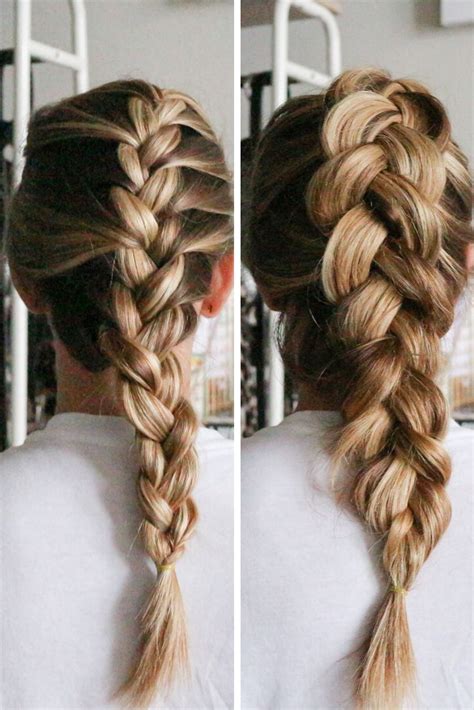Introduction

Braids have adorned the heads of women for centuries, adding an intricate touch of elegance and style. Among the most popular and versatile braids are the French braid and the Dutch braid. Both hairstyles feature overlapping strands, but they differ in technique and overall appearance. In this comprehensive guide, we’ll delve into the nuances of each braid, comparing their techniques, aesthetics, and suitability for different occasions.
Section 1: French Braid
Technique:
- Divide the hair into three equal sections near the top of the head.
- Cross the right section over the middle section.
- Pick up a small section of hair from the right side and add it to the right section.
- Cross the left section over the new right section.
- Repeat steps 3 and 4, adding small sections of hair from both sides as you braid.
- Continue braiding down the length of the hair, gradually adding sections until all hair is incorporated.
- Secure the end of the braid with an elastic band.
Aesthetics:
The French braid creates a delicate and feminine look, with the interwoven strands forming a subtle, intricate pattern. The braid lies flat against the head, adding an elegant touch to any hairstyle.
Suitability:
French braids are versatile and suitable for a wide range of occasions, from casual outings to formal events. They can be styled with accessories, such as ribbons or hairpins, to enhance their appeal.
Section 2: Dutch Braid
Technique:
- Divide the hair into three equal sections near the top of the head.
- Cross the right section under the middle section.
- Pick up a small section of hair from the right side and add it to the right section.
- Cross the left section under the new right section.
- Repeat steps 3 and 4, adding small sections of hair from both sides as you braid.
- Continue braiding down the length of the hair, gradually adding sections until all hair is incorporated.
- Secure the end of the braid with an elastic band.
Aesthetics:
The Dutch braid has a bold and sporty appearance, characterized by its raised, bulky texture. The overlapping strands create a more prominent and eye-catching effect than the French braid.
Suitability:
Dutch braids are ideal for casual settings, such as athletic events or outdoor activities. They add a touch of flair and practicality to any hairstyle, keeping hair out of the face while maintaining a stylish appearance.
Section 3: Comparison Table
| Feature | French Braid | Dutch Braid |
|---|---|---|
| Technique | Strands cross over each other | Strands cross under each other |
| Appearance | Delicate, feminine | Bold, sporty |
| Texture | Flat | Raised, bulky |
| Suitability | Versatile, formal and casual | Casual, athletic |
Section 4: Frequently Asked Questions
Which braid is easier to style?
The French braid is generally considered easier to style, as it involves crossing the strands over rather than under.
Which braid lasts longer?
Both French and Dutch braids can last for several days with proper care, depending on hair texture and maintenance.
Can I use hair extensions with these braids?
Yes, hair extensions can be incorporated into both French and Dutch braids to add length and volume.
Are there any variations of these braids?
There are numerous variations of French and Dutch braids, including fishtail braids, crown braids, and five-strand braids.
Section 5: Conclusion
French braids and Dutch braids offer distinct styles and techniques, catering to different tastes and preferences. Whether you desire a delicate and elegant look or a bold and sporty aesthetic, these braids provide versatile options that can enhance any hairstyle. Understanding the nuances of each braid will help you create the perfect braid for any occasion, transforming your hair into a masterpiece.
